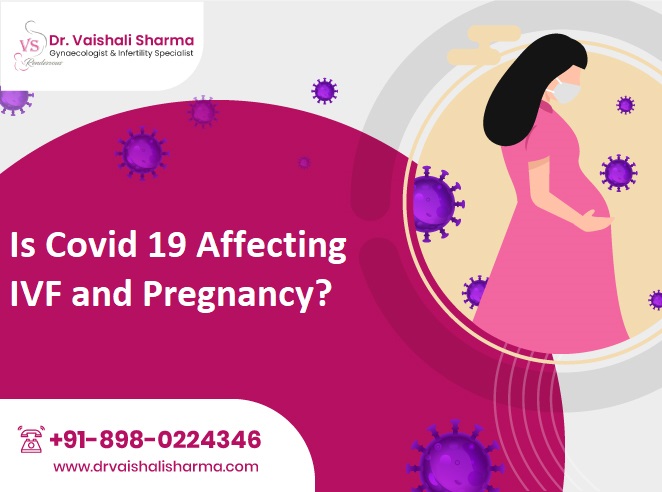When a woman is unable to have children, it can be troubling whether she or her partner suffers from infertility. Infertility can be caused by many reasons some of which are
- When a woman has gone past her reproductive years.
- When there is a fallopian tube blockage, damaged or removed altogether.
- When a man has the problem of low sperm count or slow sperm motility
- When a woman suffers from fibroid or a disorder in her ovulation cycle.
- When a man or a woman has certain genetic diseases
- Unidentified/unexplained reasons.
The invention of In vitro fertilization (IVF) has given hope to a lot of people with infertility problems who had probably given up on trying.
In vitro fertilization is an assisted reproductive technology where an egg and a sperm get manually fused together outside of the body of the female; usually in a laboratory dish. The fertilized egg (embryo) is afterward taken and transferred to the uterus where it is allowed to grow to full term. Basically, the following steps are followed for an IVF procedure, otherwise known as a ‘cycle.’
- The woman is given medication that will help to stimulate the production of eggs
- The eggs are surgically removed, and some medication is also given to reduce the discomfort
- The male produces the sperm
- The sperm and the egg are combined artificially in a process known as insemination,
- The fertilized egg is transferred to the uterus and left to grow.
A cycle of IVF can be costly. A report from the American Society of Reproductive Medicine (ASRM) shows that the average cost of having an IVF cycle is about $12,400, excluding all the medication she may need during the process. If there is a need to use a sperm or egg donor, or in some cases a gestational surrogate, the price goes a notch higher. There are no guarantees that a cycle will be successful and so there have been cases of people going through several cycles before they conceive.
In recent times, companies like Chanel, Bank of America, and a few others have taken it upon themselves to cover the cost of infertility treatments for their staff. Some of these companies even reported to have some team take up jobs they are overqualified for, just so that the company can cover their fertility treatment costs. Unfortunately, ARSM says that only a small 24% of couples with infertility issues have access to the medical care they will need to be able to have children. So if you don’t have the money to foot the bill, and you can’t switch companies, what else can you do to get a fertility treatment at minimal cost?
Learn to Negotiate Treatment Prices
First of all, it is essential to research clinics with a high success rate percentage. You don’t want to go through the IVF process too many times, knowing how expensive one cycle costs. After you have selected several options, make sure you find out the treatment price and package; make notes on what each package includes. For example, a clinic that is more expensive may have included the charges for blood tests, medication, etc.
Before you make the decision to pitch your tent with one of the fertility clinics finally, don’t be afraid to call up the other clinics to negotiate the price they offer. Other factors like the distance of the clinic from your location may make you want to consider a more expensive clinic, don’t hesitate to ask that they bring the price down.
Study your Insurance Plan Critically
Reading our insurance policy isn’t fun to do, especially all those small print that seems to go on and on without making much sense. If you intend to go for an IVF treatment, you might be missing some benefits due to you if you haven’t read your insurance policy. You might be eligible for some coverage in the cost of your fertility treatment, and the insurance companies certainly don’t go out of their way to make this clear to clients.
Although most fertility clinics don’t accept insurance, it’ll come in handy to cash in on some coverage and get reimbursed for some of your expenses.
Save up some money in costs on fertility medication
One of the main reasons why IVF gets very expensive is the amount of money spent on fertility drugs. One of the ways to keep the cost down is to purchase your fertility drugs directly from Pharmacies that specialize in fertility drugs. Some of these pharmacies have discount programs for both self-pay patients and those who are insured.
IVF refund/shared risk programs
Some clinics run a program known as the shared risk or refund program. Here’s how it works: a client pays upfront for several cycles of the treatment and has an agreement with the clinic. The contract will be that the clinic will refund part or all of the money paid if the fertilization is unsuccessful after the number of cycles paid for. It will be comforting to know that at least you get your money back if the insemination is ineffective, so it isn’t a double loss.
Fertility Grants
Some kind of scholarship is available for couples who are trying to conceive and want to go through the IVF process. The process isn’t an easy one though; it may require that you are open with your IVF history, and your private life may have to be shared with many. It is, however, going to be great if you can get the grant because this will inevitably cover a large part of your IVF bill.
Some clinics also organize raffle draws for clients who attend their informational sessions and can get a whole IVF cycle fully paid for. Such clients may, however, be required by the clinics to share their stories as a form of advertisement for the said clinic. The IVF process can be physically and mentally grueling and shouldn’t have very high costs added to the already heavy burden.
Please comment below and share your thoughts.












